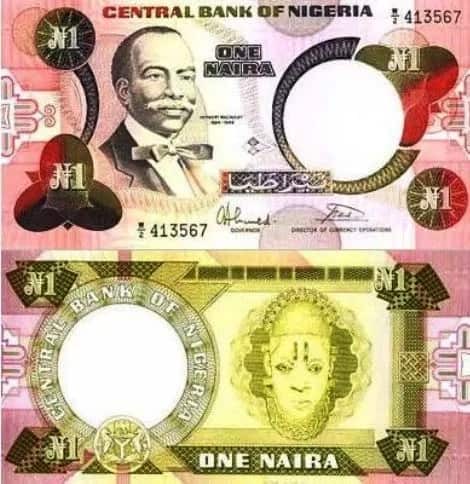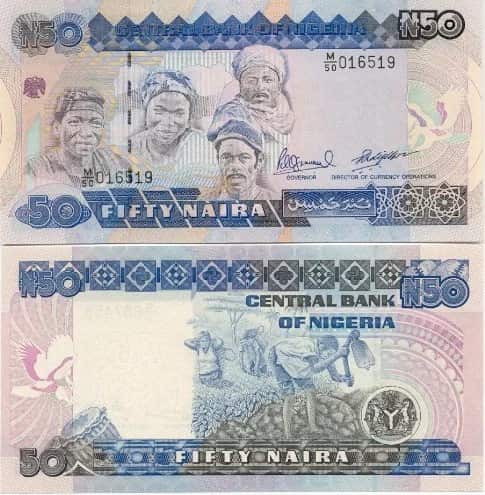History
Full List Of All Nigerian Currencies From 1912-2022 (PHOTOS)

EDITOR’S PICK:
- SCAM ALERT: 4 Ways Your Bank Account Can Be Hacked By Internet Fraudsters
- 7 Best Spy Apps To Catch A Cheating Partner
- 5 Weirdest Cars You Would Not Believe Actually Exist
Nigeria has come a long way as a nation, from the days when the currency of the colonial overlords was the only item that could be used for buying and selling, to the present day when the Naira is the legal tender.
Nigerians utilized cowries and other forms of bartering and “money” before Europeans arrived and established the country. Between the years 1912 and 1959, the West African Currency Board oversaw the minting of currency notes and coins for circulation. Pounds, pence, and shillings were the common units of currency used back then.
In 1959, the Central Bank of Nigeria (CBN) began issuing banknotes; in 1962, the currency of the country was changed. After another currency swap in 1968 as a war strategy, the naira and kobo were launched in 1973 as the official legal cash of Nigeria.
In this article on EKO HOT BLOG we would be running down through a list of Nigeria’s currency from 1912 to 2022.
1. Barter trade (exchange of farm products, livestock, textiles, copper, and other commodities).

Neighborhoods in the area quickly adopted this system of exchanging goods for basic requirements through bartering. Much of this interaction occurred between followers and their deities, but it also occurred among other social groups. There was an exchange of goods and services.
2. Cowries.

were used as currency in Nigeria before paper money and metal coins were introduced. It was common practice to trade cowries for mugs or bags. Cowries were commonly used as a kind of currency before the widespread adoption of paper currency and coins.
3. Shillings from the years 1958-1959 issued by the Nigerian government.

Although the shilling is no longer used as a unit of currency in modern Nigeria, it is still in use in neighboring Kenya and Uganda. Having an extra 5,000 shillings will make your life roughly N15,000 better in Kenya and N400 better in Uganda.
4. The Nigerian pound was issued in 1967.

If you don’t know or have forgotten, the pound was once the official currency of Nigeria. At the current conversion rate of N565 to £1, someone with a large sum of British pounds could be considered affluent.
5. A five-shilling note from 1968.

It was a wartime strategy to issue shilling banknotes in a variety of colors. Although modern banknotes were introduced, people still used coins.
6. One pound notes were reintroduced in a different colour in 1968.

All pound notes, including the five pound note, were redesigned with different hues.
7. 50 kobo was introduced in 1973 and taken off the market in 1978.

After only five years in circulation, the fifty kobo note was discontinued by the government of Nigeria. Nickel-plated coins of the same value, which had been in circulation since 1989, were pulled from circulation in 2007.
8. The one Naira note.

Naira notes were printed by the Central Bank of Nigeria in January 1973. One naira (Nigerian currency) banknote, reversed.
9. The five Naira note.

One of Nigeria’s earliest prime ministers, Alhaji Sir Abubakar Tafawa Balewa, was depicted in relief on the 1973 introduction of the new five Naira note. In 1984, the color of the notes was altered to mauve (a mix of pink and purple), and then in 2007, they were replaced from paper to polymer.
10. The ten naira note.

The Rev. Alvan Ikoku The 10-Naira note was also introduced in 1973. Ikoku was a scholar and politician. On the reverse is a photo of Fulani milk girls from northern Nigeria.

A panorama of Alvan Ikoku in both the north and south. Polymer notes of 10 naira were reintroduced in 2007 and have remained in circulation ever since.
11. The 20 naira note.

The 20 Naira bill, first printed on paper in 1973, contains a portrait of General Murtala Muhammed, a former military dictator of Nigeria.

The use of paper currency was discontinued in 2007 and replaced by polymer banknotes. Nigerian currency, with a famous female potter named Ladi Kwali shown on the back of an older twenty naira bill printed on polymer notes that are still in circulation today.
12. The 50 naira note.

When Nigerian money first entered circulation in 1991, the largest denomination available was 50 Naira. On the other side of the banknote were images of hardworking farmers.

In 2007, paper banknotes were replaced with polymer ones. In later years, the backs were changed to show fishermen showing off their catch.
13. The 100 Naira note.
 View
View
Since its introduction in December 1999, the one hundred naira note has been widely used throughout Nigeria. The note features an engraving of the former Western Region Premier, Chief Obafemi Awolowo. The back of the coin depicts the famous Zuma rock in Niger state.

A new 100 naira note was released on November 12, 2014, in celebration of Nigeria’s centennial. The original image of Zuma rock on the note was replaced with one of expert traditional dancers performing, and the note’s color was changed. In addition, the note features a QR code that, when scanned, leads to an informative webpage on Nigeria’s history (just in case you were wondering).
14. The Naira 200 note.

The 2000 introduction of the 200 Naira note has an image of Alhaji Sir Ahmadu Bello that was etched. Bello served as Northern Nigeria’s first Premier. On the flip side is a pyramid formed by sacks stuffed with various farm goods like cattle and other livestock, as well as fruits and vegetables. This could mean that agriculture is growing in Nigeria, or it could be a reference to the way people used to trade in the past.
15. The 500 Naira note.
 View
View
The first president of Nigeria, Dr. Nnamdi Azikiwe, is shown in relief on the 500 Naira bill that was introduced into circulation in 2001. An oil rig appears in the rear for no apparent reason. After all, Nigeria’s oil is well known throughout the world.
16. The 1000 Naira note.

One thousand naira banknotes were introduced in 2005, making them the biggest denomination of Nigerian money at the time. This is the first Nigerian banknote to feature both indigenous governors of the Central Bank of Nigeria, Alhaji Aliyu Mai Bornu and Dr. Clement Isong. On the back, there is a picture of the building where the Central Bank of Nigeria is based in Abuja.
17. The coin era.

There was a brief period of time when coins were the “it” item. Pence was usually made of gold, whereas shillings were usually made of silver. The Central Bank of Nigeria issued the N2 coin to help the Naira get back on its feet, but its value immediately fell along with the Naira’s.
FURTHER READING:
- JUST IN: Owo Catholic Priest Finally Speaks On Sunday Morning Attack
- PDP Charges Security Agencies To Arrest Perpetrators Of Owo Church Attack
- Owo Massacre: Peter Obi Reacts, Says Nigeria Becoming A ‘FAILED STATE’
Because they weren’t struck until 2007, the coins pictured below are considered the “big boys” of Nigerian coinage.

Both N1 and N2 coins were crafted from steel with a plating of brass or copper. Nickel was used to create the 50 Kobo coin. Signs of a “new age” Prove how well you know the in and outs of other countries’ currencies and other interesting information.
Click to watch our video of the week
Advertise or Publish a Story on EkoHot Blog:
Kindly contact us at [email protected]. Breaking stories should be sent to the above email and substantiated with pictorial evidence.
Citizen journalists will receive a token as data incentive.
Call or Whatsapp: 0803 561 7233, 0703 414 5611











